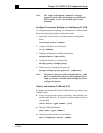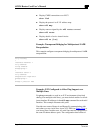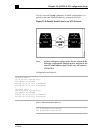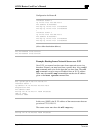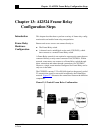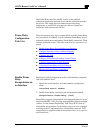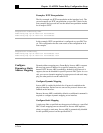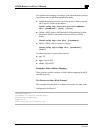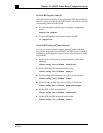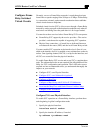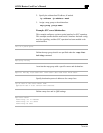
Chapter 13: AI2524 Frame Relay Configuration Steps
August 1997 Page 13-3
2524UM
Examples: IETF Encapsulation
The first example sets IETF encapsulation at the interface level. The
second example sets IETF encapsulation on a per-DLCI basis. In the
first example, the keyword ietf sets the default encapsulation method
for all maps to IETF.
encapsulation frame-relay IETF
frame-relay map ip 131.108.123.2 48 broadcast
frame-relay map ip 131.108.123.3 49 broadcast
In this example, IETF encapsulation is configured on a per-DLCI ba-
sis. This configuration has the same result as the configuration in th
first example.
encapsulation frame-relay
frame-relay map ip 131.108.123.2 48 broadcast ietf
frame-relay map ip 131.108.123.3 49 broadcast ietf
Configure
Dynamic or Static
Address Mapping
Dynamic address mapping uses Frame Relay Inverse ARP to request
the next hop protocol address for a specific connection, given its
known DLCI. Inverse ARP is enabled by default for all protocols it
supports, but can be disabled for specific protocol-DLCI pairs. As a re-
sult, you can use dynamic mapping for some protocols and static map-
ping for other protocols on the same DLCI.
Configure Dynamic Mapping
Inverse ARP is enabled by default for all protocols enabled on the
physical interface. Packets are not sent out for protocols that are not
enabled on the interface.
Because Inverse ARP is enabled by default, no additional command is
required to configure dynamic mapping on an interface.
Configure Static Mapping
A static map links a specified next hop protocol address to a specified
DLCI. Static mapping removes the need for Inverse ARP requests;
when you supply a static map, Inverse ARP is automatically disabled
for the specified protocol on the specified DLCI.



